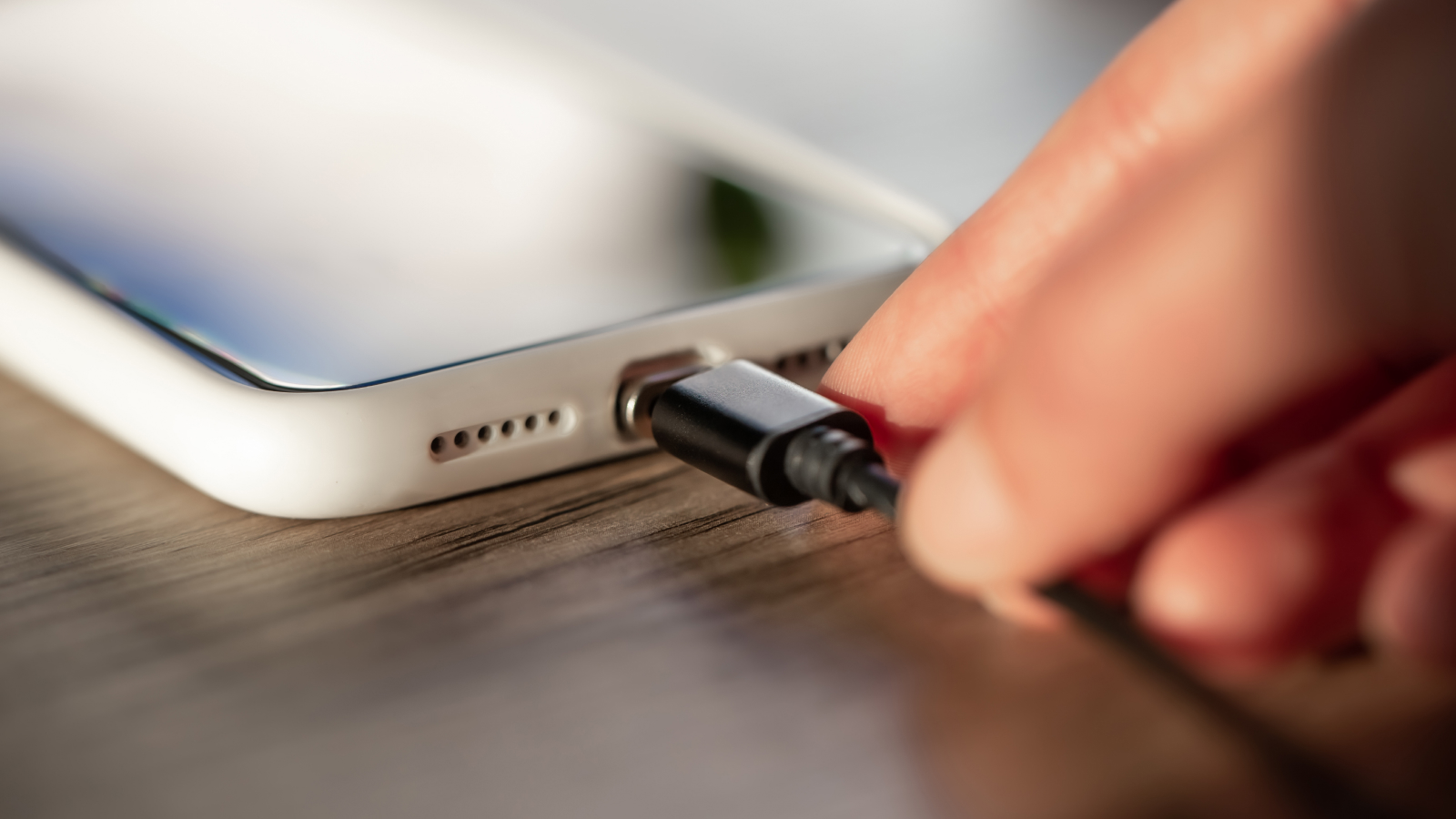World's fastest charger can fully power up your smartphone in under 5 minutes
New record-breaking fast-charging technology can power up your smartphone battery quicker than you can write an email.

Scientists have revealed the fastest battery-charging technology in the world for smartphones, which can fully charge a smartphone in less than 5 minutes.
The 320-watt fast-charging technology, dubbed "320W SuperSonic Charge," was developed by Chinese consumer electronics company Realme and beats out previous chargers. Smartphone maker Redmi, a Xiaomi subsidiary, had previously unveiled a 300 W technology to charge up a device in 4 minutes and 55 seconds in February 2023, but no manufacturer has since been able to go beyond this — until now.
Realme representatives demonstrated the new technology at the Realme 828 Fanfest event in Shenzhen, China on Aug. 14.
Related: Who invented the telephone?
The record-breaking fast-charging capability can power up a smartphone's battery to 26% in 1 minute and to 50% in less than 2 minutes. It takes 4 minutes and 30 seconds to fully charge a smartphone, according to GSMArena.
Chase just finished showing it off, and let’s just say...the future is now. #realme828Fanfest #320WFastestCharge pic.twitter.com/LLfv4c3lC5August 14, 2024
Unlike conventional charging, in which power is transferred to a single battery cell or to multiple cells in sequence, fast-charging technology simultaneously charges multiple battery cells in a single battery.
In the demonstration, Realme representatives rapidly charged a folded battery design with a 4,420 milliampere-hour capacity that stacked four cells on top of each other. This design provides a 10% higher capacity than conventional designs, company representatives said.
Sign up for the Live Science daily newsletter now
Get the world’s most fascinating discoveries delivered straight to your inbox.
The scientists miniaturized each battery cell into layered structures to pack more charging capacity into a smaller space before folding four battery cells to mimic the shape of satellite panels, according to a promotional video posted to the social platform X.
The company also created a power adapter known as a "Pocket Cannon" that has a power density of 3.3 watts per cubic centimeter. Other devices, including iPhones with a USB-C port, will receive power from the adapter, but not at the same rate.
By comparison, a 240 W charger the same company revealed last year was enabled with an adapter with a 2.34 watts per cubic centimeter power density. This previous technology could charge up the Realme GT Neo 5 smartphone in less than 10 minutes.
The new adapter can be used with many fast-charging standards, company representatives said, including UFCS, PD and SuperVOOC, and has two USB-C ports so users can charge up two devices at the same time. The maximum charging rates are up to 150 W for Realme smartphones and 65 W for compatible laptops.
Realme representatives also unveiled the "AirGap" voltage transformer, which ensures that high voltages are isolated from smartphone batteries during any electrical faults like circuit breakdowns. This is to prevent damage to the smartphone.
The transformer relies on something called "contact-free electromagnetic conversion." The tiny transformer reduces the voltage to 20 volts to protect battery life and helps the fast-charger maintain a 93% power efficiency while charging.

Keumars is the technology editor at Live Science. He has written for a variety of publications including ITPro, The Week Digital, ComputerActive, The Independent, The Observer, Metro and TechRadar Pro. He has worked as a technology journalist for more than five years, having previously held the role of features editor with ITPro. He is an NCTJ-qualified journalist and has a degree in biomedical sciences from Queen Mary, University of London. He's also registered as a foundational chartered manager with the Chartered Management Institute (CMI), having qualified as a Level 3 Team leader with distinction in 2023.









